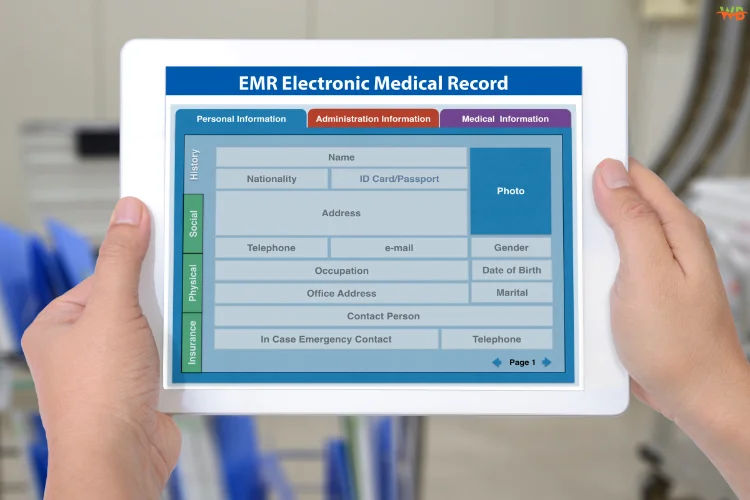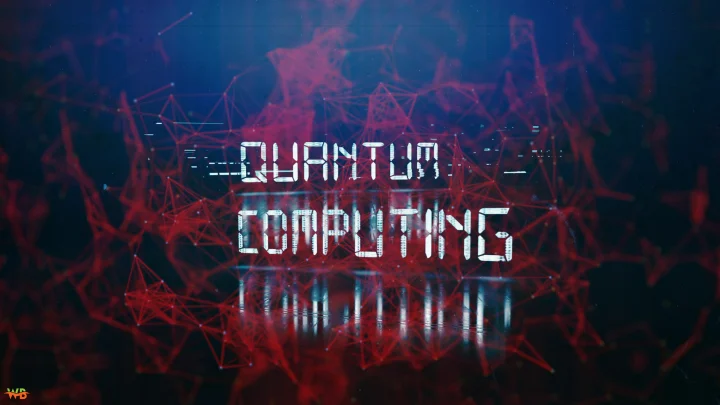In the constantly advancing realm of technology, the Hyper Networked Unified Joint Computational Workflow (HNUJCW) stands out as an innovative framework aimed at optimizing and unifying various computational processes. This state-of-the-art concept promises to revolutionize various industries by enhancing collaboration, improving efficiency, and fostering innovation. As we delve into the core of HNUJCW, we’ll explore its background, applications, benefits, challenges, and future potential, helping you understand why this framework is a game-changer for businesses looking to stay ahead.
What is HNUJCW?
HNUJCW, or Hyper Networked Unified Joint Computational Workflow, represents an advanced framework focused on integrating disparate computational processes into a cohesive system. The framework emphasizes hyper networking, which facilitates seamless connections across different technologies and stakeholders. By enabling various systems to work together effortlessly, HNUJCW enhances overall efficiency and collaboration.
The Significance of HNUJCW
The significance of HNUJCW lies in its ability to unify multiple processes into a single, streamlined workflow. This unification leads to better communication, improved data sharing, and more effective decision-making. As industries become increasingly interconnected, the need for such advanced frameworks is more critical than ever.
The Background and Development of HNUJCW
The concept of HNUJCW originated from the need to manage complex operations across various platforms. Traditional methods proved inadequate as technology advanced, prompting researchers to seek new solutions. In the early 2010s, efforts began to develop a framework that would integrate different computing tasks without disruption.
HNUJCW emerged from this research, with collaboration between industry and academia driving its evolution. This framework quickly gained traction in sectors such as healthcare and finance, showcasing its potential to enhance productivity and teamwork. Key milestones included the incorporation of AI capabilities and expansion into smart city projects, laying the groundwork for future innovations.
How HNUJCW Evolved
The evolution of HNUJCW involved several stages:
- Initial Research: Exploring the need for a unified approach to computational workflows.
- Framework Development: Creating a model that integrates various systems seamlessly.
- Industry Adoption: Testing and refining the framework in real-world applications.
- Integration with Emerging Technologies: Incorporating AI, IoT, and quantum computing capabilities.
Applications of HNUJCW in Different Industries
The potential applications of HNUJCW are vast, spanning across multiple sectors. Here’s how it transforms various industries:
Healthcare
In healthcare, HNUJCW enables seamless collaboration among medical professionals. Imagine a future where patient data is shared effortlessly across departments, leading to faster diagnoses and improved treatment outcomes. By integrating patient records, research data, and clinical tools, HNUJCW enhances the efficiency of healthcare delivery.
Finance
The financial sector benefits significantly from HNUJCW through real-time data analysis and improved risk management. Financial institutions can better manage trading strategies and control risks by integrating various data sources into a unified system. This enhanced capability allows for more accurate predictions and timely decision-making.
Manufacturing
In manufacturing, HNUJCW streamlines operations by integrating supply chain activities into a cohesive workflow. This integration reduces downtime and boosts productivity, leading to more efficient manufacturing processes. By coordinating various aspects of production, from inventory management to quality control, the framework enhances overall operational efficiency.
Education
HNUJCW also plays a role in education by facilitating better communication between teachers and students. This framework supports collaborative learning environments where resources, assignments, and feedback are shared seamlessly. It fosters an interactive learning experience, making educational processes more engaging and effective.
Smart Cities
In smart cities, HNUJCW integrates urban planning with Internet of Things (IoT) sensors to manage resources efficiently. By connecting various city functions—such as traffic management, waste disposal, and energy usage—into a unified system, the framework helps cities operate more intelligently and sustainably.
Benefits of HNUJCW
The advantages of HNUJCW are manifold, offering significant improvements in business processes. Here is a more critical glance at the key advantages:
Enhanced Collaboration
HNUJCW fosters better teamwork by eliminating barriers between different systems and stakeholders. Real-time data sharing and decision-making become more efficient, leading to improved collaboration across departments and organizations.
Improved Efficiency
By streamlining multiple processes into a single workflow, it reduces redundancy and operational bottlenecks. This efficiency translates into time and cost savings, allowing organizations to allocate resources more effectively.
Accelerated Innovation
Innovation moves forward thanks to the framework’s capacity to facilitate rapid project iterations. Teams can explore new ideas and technologies without being constrained by traditional processes, leading to faster development and implementation of groundbreaking solutions.
Adaptability
HNUJCW provides organizations with the flexibility to adapt to changing market conditions and technological advancements. Businesses are able to adapt to changing demands and remain competitive thanks to its scalable nature.
Challenges and Limitations of HNUJCW
While HNUJCW offers numerous benefits, it also comes with its own set of challenges:
Data Security
As more systems become interconnected, data security becomes a critical concern. Ensuring that sensitive information is protected from breaches and unauthorized access is essential for maintaining trust and compliance.
Interoperability
Achieving seamless communication between different platforms can be challenging. HNUJCW relies on effective interoperability to function as intended, and any issues in this area can undermine its effectiveness.
Scalability
Organizations must consider the scalability of solutions as they grow. The framework should be able to adapt to increasing demands and complexities without compromising performance.
Ethical Considerations
The use of advanced technologies within HNUJCW raises ethical questions about transparency and accountability. It’s crucial for organizations to address these concerns and ensure that their practices align with ethical standards.
The Future of HNUJCW
Looking ahead, HNUJCW is poised to play a significant role in the future of technology. Some important forecasts and possibilities are as follows:
Integration with AI
The future of this framework will likely involve deeper integration with artificial intelligence. AI can enhance the framework’s capabilities by automating processes, analyzing complex data sets, and providing valuable insights.
Expansion of IoT Capabilities
As the Internet of Things continues to evolve, HNUJCW will benefit from improved data interchange and decision-making across sectors. Enhanced IoT capabilities will enable even more seamless integration of various systems and devices.
Quantum Computing
Quantum computing holds the potential to redefine computational capacity within this framework. By handling massive volumes of data at unprecedented speeds, quantum computing could unlock new approaches to problem-solving and innovation.
Enhanced Cybersecurity
As HNUJCW evolves, so will the need for robust cybersecurity solutions. Protecting sensitive data and ensuring secure collaborative environments will be paramount for organizations adopting this framework.
Conclusion: The Future of HNUJCW
Hyper Networked Unified Joint Computational Workflow (HNUJCW) represents a significant advancement in the realm of technology integration. By streamlining and unifying multiple computational processes, this framework enhances collaboration, boosts efficiency, and drives innovation across various industries. While there are challenges to address, such as data security and interoperability, the potential benefits are immense.
As technology continues to advance, this framework will play an increasingly crucial role in shaping the future of business and industry. For organizations looking to stay ahead of the curve, embracing this innovative approach is a step towards unlocking new opportunities and achieving greater success in a rapidly changing world.
FAQs
1. How does HNUJCW handle legacy systems integration?
- HNUJCW addresses legacy systems integration through adaptable interfaces and middleware solutions. It utilizes specialized connectors and APIs to bridge the gap between older systems and modern frameworks, ensuring smooth data flow and functionality without disrupting existing processes.
2. Can small businesses benefit from implementing HNUJCW?
- Absolutely! The framework is designed to be scalable and adaptable, making it beneficial for organizations of all sizes. Small businesses can leverage its capabilities to streamline their operations, improve efficiency, and enhance collaboration, even with limited resources.
3. What training is required to implement HNUJCW effectively?
- Implementing the framework typically requires training in system integration and data management. Organizations often need to provide their staff with training on using the framework’s tools, understanding its processes, and managing its features to maximize its benefits.
4. How does HNUJCW support compliance with industry regulations?
- The framework supports regulatory compliance by incorporating features that help track and manage data according to industry standards. It includes compliance checks, audit trails, and reporting capabilities to ensure that organizations meet legal and regulatory requirements.
5. What role does user feedback play in the evolution of HNUJCW?
- User feedback is crucial in the evolution of the framework. It helps developers identify areas for improvement, address practical challenges, and enhance the framework’s functionality. Continuous feedback from users informs updates and refinements, ensuring that the framework remains relevant and effective.

Ton Roobprom is an experienced writer focused on practical advice across technology, business, travel, beauty, lifestyle, and home improvements. He specializes in distilling complex subjects into clear, actionable insights to help you enhance your daily life.





